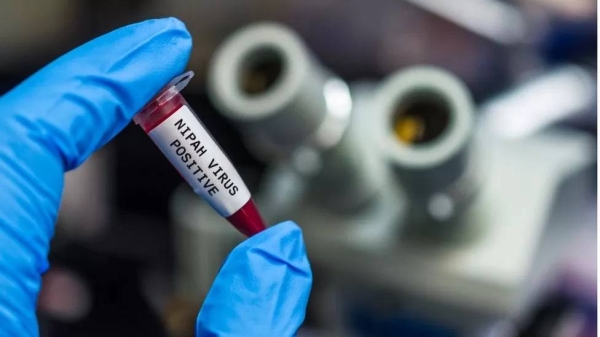
India"s fourth case of monkeypox has been reported in a man in the national capital Delhi who has no history of foreign travel.
The federal health ministry has asked the Delhi government to trace the 34-year-old"s contacts, local media has reported.
States have been asked to carry out "close surveillance" for the virus.
The government has also issued preventive guidelines on the disease.
Delhi Chief Minister Arvind Kejriwal said the patient in the city is stable and recovering from the infection.
"There is no need to panic," he added.
The man had travelled to Himachal Pradesh state before he fell ill - surveillance teams are checking whether he could have contracted the infection there, or from a friend, The Indian Express newspaper reported.
The first three cases in India were reported from the southern state of Kerala - all of them had travelled to the state recently from countries in the Gulf region.
Last week, the World Health Organization (WHO) declared the monkeypox outbreak a global health emergency.
More than 16,000 cases have now been reported from 75 countries, said WHO director general Dr Tedros Adhanom Ghebreyesus.
"The WHO"s assessment is that the risk of monkeypox is moderate globally and in all regions, except in the European region, where we assess the risk as high," he said.
There had been five deaths so far as a result of the outbreak, he added.
Monkeypox is caused by the monkeypox virus, a member of the same family of viruses as smallpox, although it is much less severe and experts say chances of infection are low.
The virus spreads when someone is in close contact with an infected person. The virus can enter the body through broken skin, the respiratory tract or through the eyes, nose or mouth.
What are the symptoms of monkeypox?
Initial symptoms include fever, headaches, swellings, back pain, aching muscles.
Once the fever breaks a rash can develop, often beginning on the face, then spreading to other parts of the body, most commonly the palms of the hands and soles of the feet.
The rash, which can be extremely itchy or painful, changes and goes through different stages before finally forming a scab, which later falls off. The lesions can cause scarring.
The infection usually clears up on its own and lasts between 14 and 21 days. — BBC












